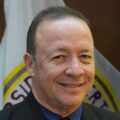
The United States, under Article 4, Section 3 (the Territorial Clause) of its Constitution, governs 16 territories, of which 5 are populated: American Samoa, the Northern Mariana Islands, Guam, the U.S. Virgin Islands, and, since 1898, Puerto Rico. Puerto Rico is unique among these as it is of Latin American heritage, Spanish-speaking, and has the highest degree of self-government, including a local Constitution. All U.S. citizens residing in these five territories (considered colonies under certain interpretations of international law) experience political inequality relative to citizens in the states. Although they hold U.S. citizenship, they do not have the same civil and political rights. For instance, while they are subject to military service, they lack full representation in the Senate and House of Representatives (they have only a Commissioner, who can speak but not vote) and cannot vote for the President of the United States.
Puerto Rico is the only territory with a significant political movement that has long advocated for statehood, i.e., full legal and political integration as the 51st state. This option gained a majority in 2012 with the then-held plebiscite and won again in the plebiscitary consultations of 2017 and 2020.
A new plebiscite
On November 5, Puerto Ricans will go to the polls to vote in their general elections, which will also include a symbolic vote on the U.S. presidential contest between Donald Trump and Kamala Harris, as well as another plebiscite (the seventh). The status options on the ballot are the same as those outlined in U.S. House Bill 8393 of 2023: statehood, independence, or free association—a form of independence that maintains a relationship with the U.S., similar to the compact signed in 1990 between the U.S. and the sovereign Marshall Islands. According to this bill, if Puerto Ricans choose free association, this status would guarantee U.S. citizenship for those born during the 20-year transition period and federal government fund transfers (currently about $26 billion annually) until the final separation. Bill 8393 stipulates that U.S. citizenship and federal transfers would remain permanent under statehood but would end under independence. Citing this as a primary cause of the 2017 government bankruptcy, which remains unresolved, and other societal problems, this legislation excludes the current territorial/colonial status—Commonwealth (ELA), established in 1952—as an option.
Projections
Some polls project that statehood will again gain a majority of around 55%, while the two independence options will account for about 45%.
A result within this range would represent a new victory for statehood. However, it remains to be seen if it will carry enough weight for the statehood movement to further its lobbying efforts with the U.S. Republican Party, which remains most resistant to Puerto Rico’s integration, primarily for two reasons: the Republican leadership under Donald Trump does not share the civil rights equality arguments put forth by statehood advocates, and it believes that Puerto Rico would likely be a Democratic-majority state. Thus, a possible statehood victory would require highly effective lobbying if Trump returns to the White House.
The statehood movement’s efforts would likely resonate more if Kamala Harris wins the election, as President Joe Biden, on behalf of his administration, has expressed support for statehood.
The elections
Puerto Rican political debate revolves primarily around the long-standing status issue, focused on determining Puerto Rico’s final relationship with the United States. In this context, the party system is largely organized around the different options, with various ties and/or affiliations with U.S. parties.
Currently, Puerto Rico has a divided government. The governor, elected in 2020, is Pedro Pierluisi of the New Progressive Party (PNP), which advocates for statehood, includes both Republicans and Democrats, and leans economically liberal. Pierluisi will not run in the upcoming elections, as he was defeated in the June primaries by Commissioner (Representative) Jenniffer González Colón, a non-Trump Republican who supported Nikki Haley.
The bicameral legislature is controlled by a coalition that allows the Democratic Popular Party (PPD) to hold the institutional presidency. Historically, the PPD has been linked to the Democratic Party and supports the status quo of the Commonwealth. Today, the PPD, more pro-government intervention than the PNP, is divided between Commonwealth supporters and advocates of free association.
Other parties include the Puerto Rican Independence Party (PIP) and the Citizens’ Victory Movement (MVC), both pro-independence, which have affinities with regimes in Cuba, Venezuela, and Nicaragua. In fact, PIP’s lifetime president, Rubén Berrios, has served as an advisor to Nicaraguan autocrat Daniel Ortega. Lastly, there is Proyecto Dignidad (PD), an ultraconservative party without a defined position on the status question.
Electoral outlook
Polls predict a victory for González Colón with around 40% of the vote, approximately 25% for Jesús Manuel Ortiz of the PPD, another 25% for Juan Dalmau, candidate for a PIP-MVC alliance, and 10% for Javier Jiménez of PD.
Conclusions
The extent of González Colón’s potential victory (barring surprises) and the statehood movement’s success will depend significantly on the outcome between Kamala Harris and Donald Trump, as well as on the makeup of both Puerto Rico’s legislature and the U.S. Congress.
All signs suggest that the ongoing debate on whether Puerto Rico will remain under the territorial/colonial model, move toward becoming a new Latin American republic, or become the first Hispanic and Latino state in the United States will continue intensely and actively over the next four years.


